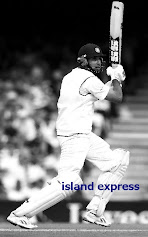The supercilious tone that Ram Guha in
his article Serpent in the Garden (or how
The IPL is representative of the worst sides ofIndian capitalism and Indian society) uses to rubbish 20-20 cricket and the IPL
should have been very familiar to me. I have been reading a battered duct-taped
copy of the Picador Book of Cricket, edited by him – and it is evident
from the writings chosen therein, that either there are very few good
cricketers in the modern era who can be written about, or that modern writings about cricket are not upto his mark. But it is with me, a copy
which was bought by a friend, from the sweaty
sale-by-the-kilo Sunday raddi book market in Daryaganj, in Old
Delhi a couple of years back, for fifty rupees.
We bought that book because we had
read one of Guha’s writings - his article “The Wall”.
It was about Rahul Dravid and his intensity and temper, and its interpretation
by an advertising firm. It took a fascinating trip through yesteryear stars and
linked them up with Dravid’s style of play, and at the end only a lingering
image of Dravid as a classical block test batsman should have remained.
Fortunately we had tv, and could see the same Dravid scampering around the
field, sometimes heaving dirty strokes, sometimes awfully trying to force the
run rate. We could see that Dravid was what Mr. Guha made him to be, but also
what Dravid wanted to be, which was so much more. Watching him with the young
Rajasthan Royals now, you might even have been mistaken: were we reading about
the same man. You see, Mr. Guha’s cricket writing had a classic problem – it
was based on experiences of watching matches in stadiums - where everything is
far off; where even from the best stands, nuances are missed; where even if you
have the best angles, facial expressions are lost. Stadium cricket, unless done
through and probably even then, a pigeon hole picture through binoculars, is an
alienating experience, an experience where you have to start relying on your
thoughts of what is happening in the middle, rather than being able to see the
high definition broadcasters’ focus on lingering close-ups of players.
Cricketers cannot be built up to be something they aren’t on the television.
But this was not a choice for the lot
of us. We were not brought up in big cities.
Cuttack,
which was my paternal home town, had a game played there every two-three years,
and even that was 60 kilometres too far away. As kids, we had to watch
Azharuddin and Sachin in borrowed time in neighbours’ houses, sometimes even
going to the extent of stealthily plugging an antenna wire into their cable connections.
For us, cricket played professionally in stadiums, cricket played in clubs,
that always was entertainment. Our cricket was not the maidan cricket so fondly
spoken of by Indian cricket commentators; that was the cricket played in cities,
that lead to professional club cricket, and to Ranji representation.
We
played our cricket in anywheres - school fields, colony fields, fields in
government bus stands and fields in the tehsildar compounds. Wickets were
chappals, or in better times, bricks. Tennis balls and duct taped balls, and
matted wickets, all these were too costly for us; we played with cork balls
which weighed a ton, and would break a bone if they hit us. But they lasted
ages. That was our cricket. No structure to it, no coach to it, no club for it.
The crooked arm was not a no-ball. Cricket which came on TV was just that, an
additive live show, which we could understand and adulate because it was bat
and ball. Our cricket was separate from that cricket. So there was not much to
worry about when IPL came. We never had the privilege of cricket association
memberships, of 5 day gaps in our professional aspirations, club memberships or
even players representing our states in the Indian team. We had nothing to lose.
For us, IPL brought cricket home in a month that was traditionally dry; IPL
managed to allow us cricket at a time and in a format which suited us; for lots
of us IPL managed to allow us access to tickets which were reserved only for
association members and pass holders, and if anything, IPL helped us glimpse
cricketers whom we were not allowed to see earlier.
For us IPL was a sort of democratisation
for the cricket experience.
But for all that IPL gives us, we probably have a more objective way of looking at it than Mr. Guha does. That
IPL could not have been done without the franchise model – the investment
required to pay the players, the coaches, the talent hunters, and to run the
team at that scale required private capital. So far this lack of capital
produced shoddy domestic cricket, unfit to be broadcast and unfit to be watched
on television. If the ownership was handed out after a contrived process, then
the competing bidders had our best regards for the legal rights they had; but
till the time the cricket was real, competitive and live, being as far removed
from the our cricket as any other form of previously televised cricket, there
was no reason not to watch it.

